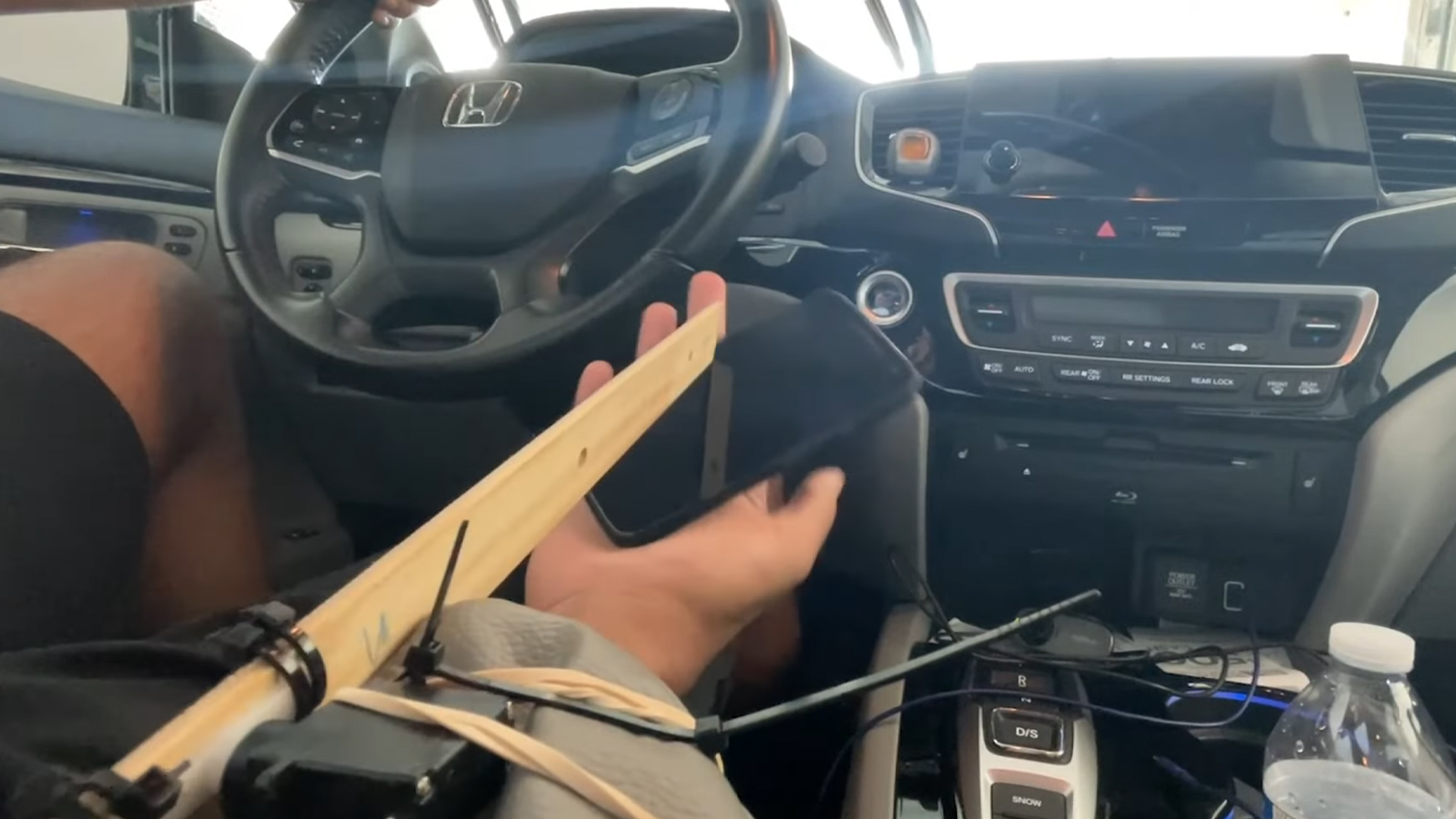

Distracted driving is dangerous, and using your cellphone behind the wheel is particularly stupid. At highway speeds, sending a text means potentially looking at your phone for the same amount of time it takes to drive across a football field. And in 2020, the NHTSA says that distracted driving killed 3,142 people. Clearly, something needs to be done.
What that something actually is, is still being worked out. The good news is that car manufacturers are working on preventing distracted driving through the use of in-car tech. Meanwhile, drivers are still texting and driving, so someone decided to take this challenge on themselves. The bad news? Well, their solution is absolutely ridiculous.

The build, as intentionally hilarious as it might be, is ridiculously simple.
Inventor Ayush Pai used an Ardiuno Uno microcontroller board paired with a servo motor to do the bulk of the work. A Logitech webcam is then added to the mix in order to give the project eyes and a bit of homebrew code performs object detection to observe if the driver picks up a cell phone. If they do, the servo is activated and a ruler zip-tied to the contraption punishes the driver by smacking the phone out of their hand.
While this invention might seem like some sort of creation mustered up by Simone Giertz or Michael Reeves, it’s actually a brilliant tactic to call attention to a problem that automakers have been working to solve for years, albeit a bit less elegantly than an OEM solution from the factory.
Subaru’s DriverFocus tech, for example, was launched in 2019. It uses inward-facing cameras that can detect when a driver’s eyes or heads depart from the road and plays an audible alert to remind the driver to stay focused on the task at hand. Other manufacturers have baked driver monitoring into driver assistance tech. Ford’s BlueCruise will alert a driver if they aren’t paying attention when hands-free highway driving is engaged using a series of audible and visual warnings, and if the camera is covered or can’t detect a driver, it simply won’t allow a driver to engage the system.
Vendor-agnostic aftermarket companies have also taken up driver monitoring in order to increase safety. Comma AI’s OpenPilot, for example, has one of the best driver monitoring implementations that I have personally used. It’s accurate, has near-infrared support for dark vehicle cabins, and is genuinely annoying—a good thing, considering that you want to force drivers to look back to the road.
Granted, none of those are as aggressive as a piece of wood slapping a phone out of the driver’s hand, but hey, we all have to start somewhere.
Got a tip or question for the author? Contact them directly: rob@thedrive.com